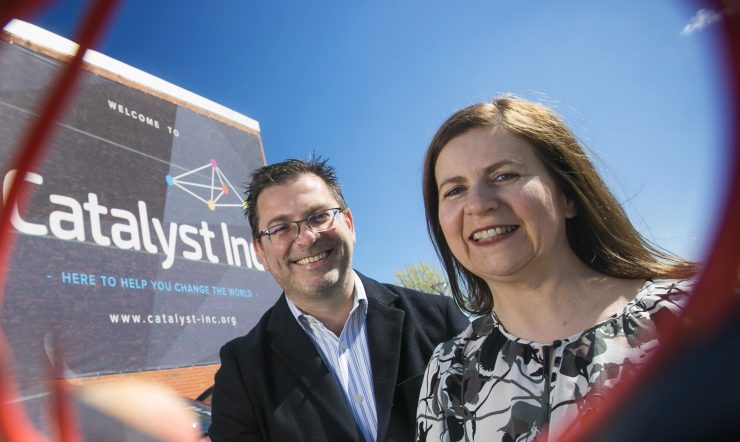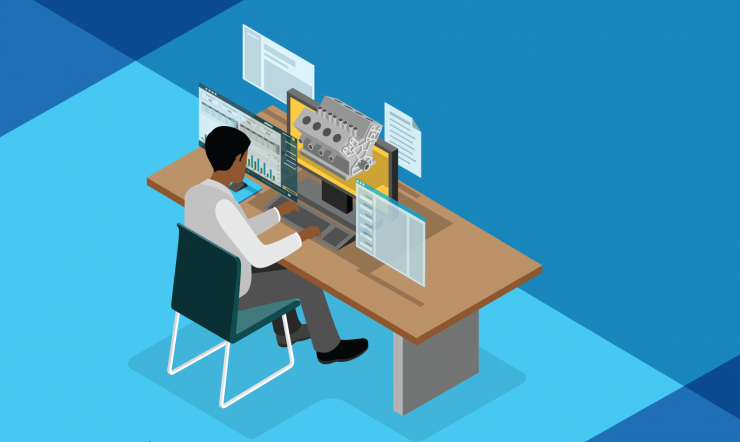AI and Customer Service – Start small, iterate, learn and improve. But definitely start.
In conjunction with the Contact Centre Management Association and Codec, Microsoft jointly commissioned research into the current state of thinking in the Irish market around the application of artificial intelligence (AI) to customer contact and customer support scenarios.
The results are interesting – But before discussing that, it might be worth to pause and clarify what we at Microsoft mean by AI. It’s a term used both widely and wildly to describe a vast array of different elements, and I think this very factor explains some of the outcomes of our research.
At Microsoft, we believe that AI enables collaborative and natural interactions between people and machines that extend the human ability to sense, learn and understand. Our deep expertise and investment in AI enables computers and agents that understand what they see, communicate in natural language, answer complex questions and interact with their environment. In addition, we’re putting significant emphasis on the ethics and societal impacts of intelligent technologies to ensure that we’re empowering every person and organisation on the planet to achieve more in an equal way.
AI agents and tools that can engage with humans to reason, communicate and answer questions intelligently. The application of that to customer service and customer contact scenarios are pretty clear – customers self-serving to get their issues resolved faster, human support teams able to focus on the more complex cases – and significant cost and efficiency gains as well. Great.
However, our research has shown that although most of our organisations surveyed (90% actually) agree AI has transformative potential for these scenarios, most see this as a future rather than current investment. Less than 40% see AI as a priority now – particularly in terms of customer relationship management (CRM) technology. I think there are two main reasons for this.
- The first is knowledge. Referring back to my point about how wide, wild and confusing the term ‘AI’ can be, many customers struggle to understand how and where to start. Often, there’s an expectation that deep, exotic skills are required to start building AI customer service agents. Good news! We have pre-built AI services that can handle vision, speech, language, knowledge and search tasks. These include impressive– and powerful – features that you can build for your AI customer service agents like emotion detection, real-time speech translation, sentiment analysis, and loads more.
- The second is legacy. Many customers have large, existing systems and infrastructures. It’s a daunting task to think about replacing that. That’s not where we start with many customers. Quite the contrary in fact – the key to many of our customer’s successful projects is to start small, learn fast, and scale from there.

Microsoft Enterprise Director Ger Perdisatt (Left), Dorothy O’Byrne, Managing Director, Contact Centre Management Association (CCMA) Ireland (middle), Larry Tobin, Dynamics 365 Practice Director, Codec. (right)- Photograhs: Colm Mahady
I should stress that this isn’t ‘art of the future’ stuff. These are tools that – in conjunction with great partners like Codec – we’re helping customers with right now. Customers are building agents that are helping them serve new markets, in innovative ways, in real-time, 24-7 – at a fraction of the traditional costs using only human agents. Obviously, it’s key to have a seamless escalation and handover to a real agent at some point (with the context of what’s going on, and the information needed to help the human agent to resolve the issue fast). The really interesting thing is the machine learning aspect – there’s a constant feedback loop that helps the AI get better and better at servicing the routine tasks, freeing up the human agents to really add value. And guess who trains the AI? Yep, the human agents – the ones best placed to know.
Let me put some flesh on the real-world situation. Telefonica – one of the largest global telecommunications firms – has built their ‘Aura’ AI customer service system to help it quickly deliver a natural language service solution in six countries across Europe and Latin America. Depending on their location, customers naturally interact with Aura through multiple channels: a home device, mobile app, a social channel such as Facebook Messenger, or even another digital assistant like Cortana. Specific Aura services vary by country, but most Telefonica customers can use Aura to manage their accounts, get real-time support, check data usage, or review billing information, all through natural voice interaction—in several languages. Customers in Spain, for instance, can ask Aura to recommend a movie, find a specific TV program, or tell them when it will air next. This significantly enriches the customer experience.
Another example – Microsoft ourselves – Our support AI agents for Microsoft.com sites around the world handles over 100,000 conversations daily, and over 40% are handled end-to-end without ever requiring a human agent intervention. Our system now understands over 4,500 specific intents or customer requirements. This really helps to improve the speed of issue resolution – and is very cost effective.
So in terms of bringing this particular blog to a close my main call to action is to start. Start small, iterate, learn and improve. But definitely start.

Ger Perdisatt
Enterprise Director
























